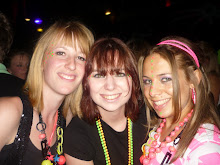
Throughout this week I have been reading the book 'The basics of video production' written by Des Lyver and Graham Swainson. I chose this book to read because as I, myself am new to multimedia course I thought that it would be a good idea to start learning the basics of video production.
If I had to explain this book in one sentence then I would say 'a help guide through the basic principles of production'. The book explains in a step by step basis every detail of video production, starting from the where the television production is made. In the first chapter it decribes where the production is set and shows the readers a simple yet effective outline of a studio. This inlcludes explaining how the studio works i.e. the gallery (directors viewing point) the floor area (where the production is made) the sound control area and lighting. All of these areas are decribed in basic details but the reader can understand how the studio is set.
Des Lyver then moves onto the the team/crew who help create the production. There is alot of detail written about the director and PA to show people every aspect of their work. I feel that describing the PA's role in depth, in the production team was a conscious decision because before reading this book I did not realise that they had so much involvment/authority.
The following chapters not only describe the team but also what is actually involved within their section. This included sound team (sound supervisor, sound assistant and Boom supervisor). The lighting team (lighting director,operator,Gaffer and sparks) the camera team, the vision mixer, engineering team, floor management team, scenery team, wardrobe team and make-up team. All of these chapters explains what their jobs involve, what equipment is and how the equipment is used.
Des Lyver introduces the paperwork side of production near the middle of the book. The paperwork included the basic things needed to know i.e. script, storyboard etc however Lyver decribes why such paperwork is needed (for an aim and objective)
The main bulk of this book has been about studio production and it is not until near the end of the book that Lyver writes about single camera production (location production). Like previous chapters Lyver describes how a studio production works and what team members are involved in these chapters the single camera production is explained because of the difference in the two production a quite big i.e. camera team smaller, lighting is harder to control (natural lighting can't be controlled) sound has to be controlled.
Lyver also introduces the basic paperwork that is needed to create the production (chapter18) this would be the location agreement form, recce (location plans and drawings), insurance, screen script, call sheets (production crew avliabilty), logs of shots and copywrite agreements.
The final few chapters talk about editing the production, different types of editing techiques are explained (cut and slice, hybrid and non-linear) the team who edits the production consists of the director, PA, editor, tape operator, edit assistant and sound person. What I was surprised at was that Lyver also explains how an edit works.
Audio post production is final stage in the production and the last chapter, Lyver shows that audio post production can be as simple or more technical, its up to the director.
From reading this book I've managed to gain a basic outlook on what goes on, on a studio set, I did not realise the amount equipment needed and the amount of planning going into a production before its could be ready. I feel that this book is going to help a great deal in the future and it will be a reference book.

No comments:
Post a Comment